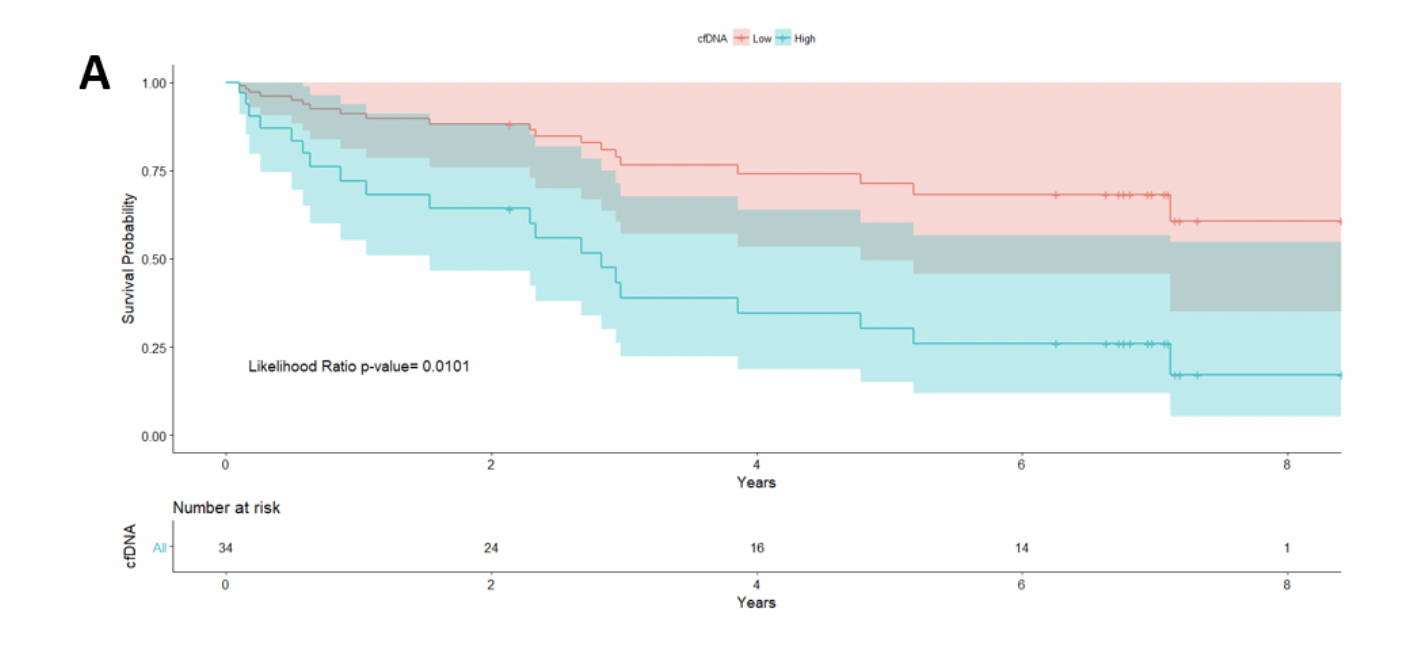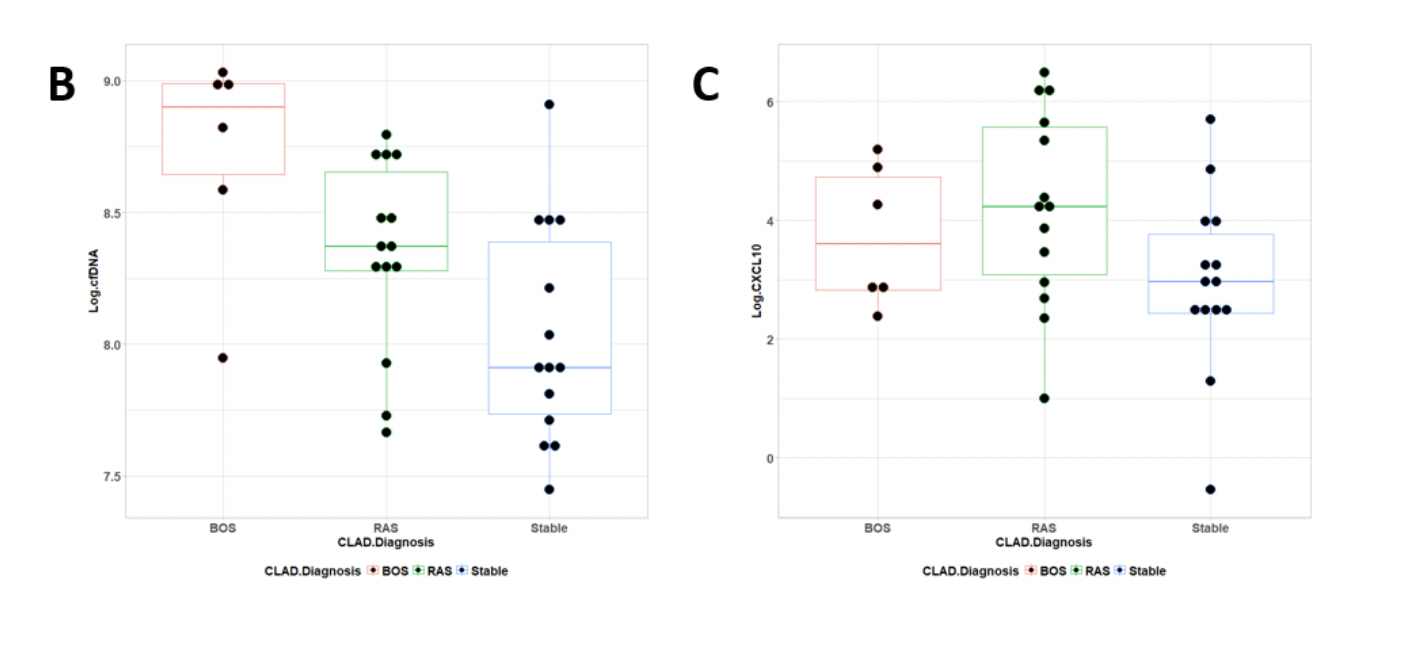Bronchoalveolar Lavage Biomarkers Predict Lung Transplant Survival
1UC San Francisco, San Francisco, CA, 2Johns Hopkin, Baltimore, MD, 3Kit Bio, Los Altos, CA, 4KU Leuven, Leuven, Belgium
Meeting: 2019 American Transplant Congress
Abstract number: 389
Keywords: Graft survival, Lung transplantation, Non-invasive diagnosis, Rejection
Session Information
Session Name: Concurrent Session: Infections, Antibodies and Biomarkers in Lung Transplantation
Session Type: Concurrent Session
Date: Monday, June 3, 2019
Session Time: 4:30pm-6:00pm
 Presentation Time: 5:06pm-5:18pm
Presentation Time: 5:06pm-5:18pm
Location: Room 206
*Purpose: In lung transplants (LTx), chronic rejection remains a major cause of morbidity and mortality following transplantation, mainly from chronic lung allograft dysfunction (CLAD). Two phenotypes exist; bronchiolitis obliterans syndrome (BOS) and restrictive allograft syndrome (RAS). Improved methods of CLAD diagnosis are necessary. Cell-free DNA (cfDNA) consists of fragments of nucleic acids that circulate in biofluids. Studies have shown that plasma and urine cfDNA is elevated in transplant patients undergoing allograft rejection. We explored cfDNA and CXCL10 derived from bronchoalveolar lavage (BAL) as potential biomarkers of CLAD and survival in LTx patients.
*Methods: Thirty-four LTx patients with BAL specimens were studied. Patients were diagnosed per standard definitions as stable (n = 14), BOS (n = 6), or RAS (n = 14). BAL was used for measurement of cfDNA and inflammatory markers. ANOVA and Cox proportional hazards regression were performed.
*Results: Cox proportional hazards regression was performed to assess the degree of association of cfDNA, CXCL10, and the interaction of cfDNA and CXCL10 with overall survival. Likelihood ratio tests revealed a significant association of overall survival and cfDNA (p < 0.01), CXCL10 (p = 0.01), and the interaction of cfDNA and CXCL10 (p = 0.02) (Figure A). Mean differences in log(cfDNA) and log(CXCL10) levels between stable and CLAD diagnoses were significant (ANOVA; p = 0.004 and 0.02, respectively). Pairwise mean comparisons of cfDNA resulted in a significant difference between BOS and stable cfDNA values (p = 0.001), and RAS and stable cfDNA values (p = 0.04) (Figure B). Pairwise mean comparisons of CXCL10 resulted in a significant difference between RAS and stable CXCL10 values (p = 0.04) (Figure C).
*Conclusions: Despite the small size of our study, results strongly suggest that cfDNA and CXCL10 measurements in BAL are highly synergistic biomarkers that are predictive of overall survival in LTx patients. Larger prospective studies in LTx patients utilizing cfDNA and CXCL10 are currently being executed to validate the utility of these biomarkers in diagnosis of CLAD and as predictors of overall survival.
To cite this abstract in AMA style:
Zarinsefat A, Yang JY, Sarwal R, Liberto J, Watson D, Verleden S, Sarwal M. Bronchoalveolar Lavage Biomarkers Predict Lung Transplant Survival [abstract]. Am J Transplant. 2019; 19 (suppl 3). https://atcmeetingabstracts.com/abstract/bronchoalveolar-lavage-biomarkers-predict-lung-transplant-survival/. Accessed December 31, 2025.« Back to 2019 American Transplant Congress


